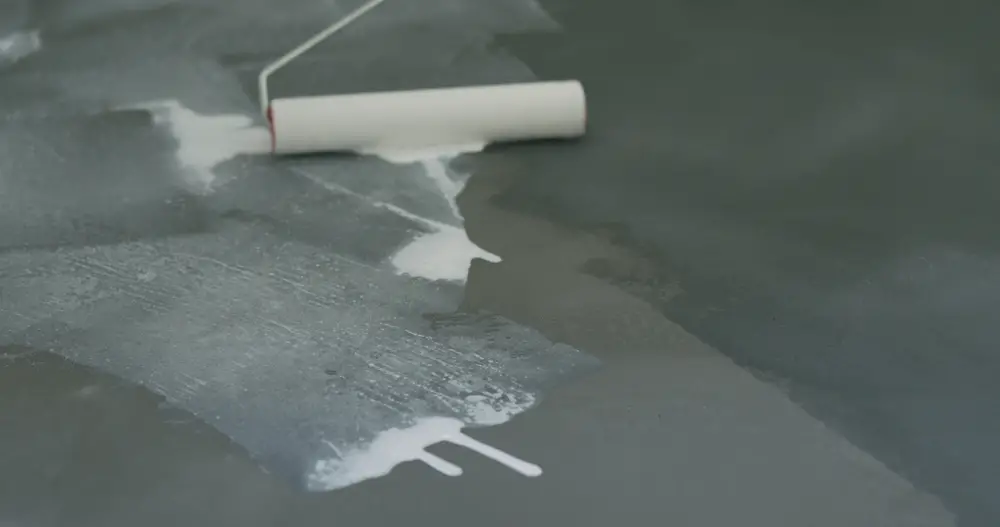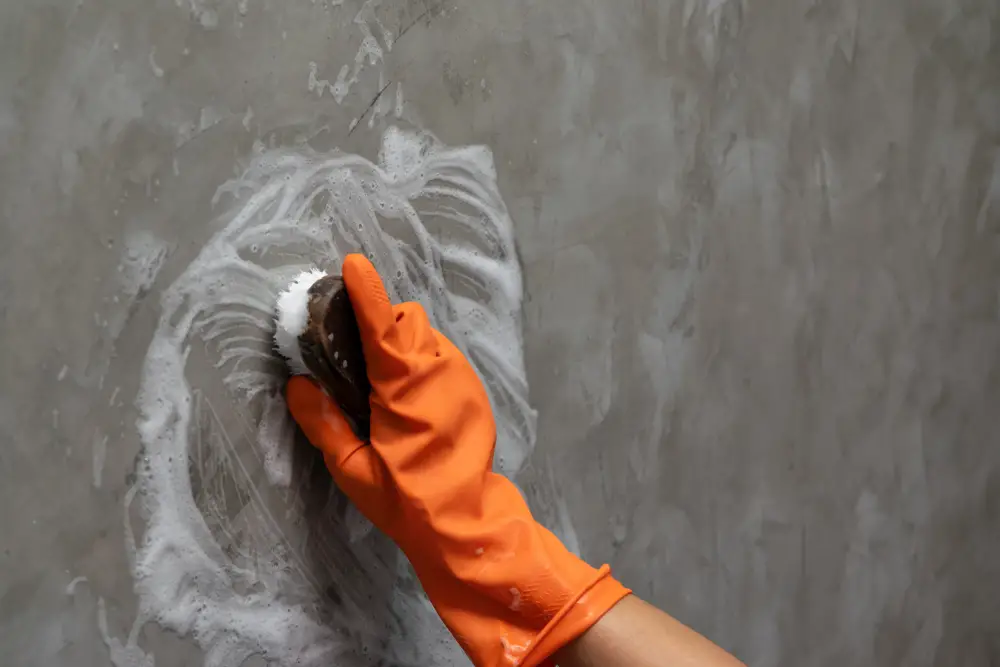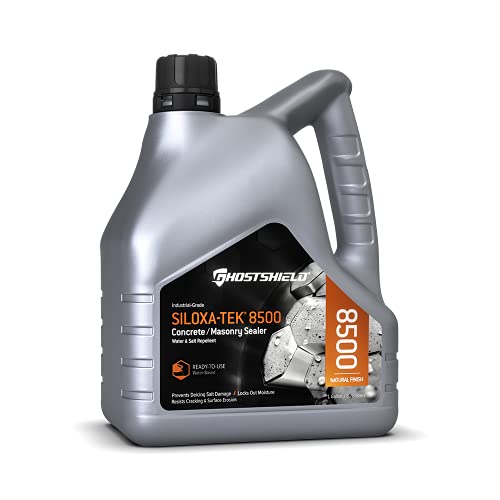Many people have concrete areas in their gardens or around their homes. It is a popular and durable material for open spaces and driveways. Trees and shrubs nearby, however, can be responsible for leaf stains that you start to notice on your concrete overtime. Luckily, you can prevent these leaf stains and eliminate them once they occur.
The most effective method to prevent concrete leaf stains is to get on top of your leaf gathering and removal process during the Fall months. The longer you wait to remove leaf buildups, the more you risk stains to your concrete. You can also help prevent leaf stains on concrete by using a concrete sealer or concrete coating.
Allowing leaves to sit on concrete for a long time will result in decay, mold, and mildew, which will then stain the concrete and decrease the appeal of your concrete. There are ways to prevent stains from occurring and methods to try and remove them if the damage has been done. In this article we will discuss both leaf stain prevention and leaf stain removal!
How Are Leaf Stains Created?
Leaves can leave marks on concrete due to a compound called tannins. Tannins are the same thing found in grapes, which will also stain clothing along with many other materials. When leaves are allowed to sit on the concrete for some time, they start to degrade. During this process, they give off tannins, which reacts with the alkaline in the concrete and produces a stain.
Concrete is a porous substance, meaning that the tannins from the leaves can leak into the concrete and cause the stain to occur. The tannins from the dying leaves react with the alkaline in the concrete, which causes the concrete to discolor.
Fortunately, leaf stains on concrete are not permanent. The compounds from the leaves that cause the stains are organic. You can remove the stains, but it can be a challenging process. So lets find out how to prevent and remove leaf stains from concrete!
How To Prevent Leaf Stains On Concrete?
By far the simplest way to prevent leaf stains on concrete is to remove the foliage near the concrete. Cut away parts of overgrown trees or other foliage annually or every other year. If there are no leaves to fall, there will be no leaf stains.
During the Fall months when trees shed their old leaves, you should look to remove them from your outdoor concrete as soon as practicable. This will help to prevent the degrading process from the beginning. As an added bonus, if your concrete has begun to stain, you will see below that fresh stains are significantly easier to remove than stains that have been embedded in the concrete for a while.
You can use a rake or leaf blower to remove the leaves and debris, but a garden hose works effectively too. The water will ensure that smaller debris or leftover leaves are removed from the concrete.
Using A Concrete Sealer To Prevent Leaf Stains

Another option to prevent leaf stains on concrete is using a concrete sealer. Concrete sealers are great for preventing stains from chemicals, acids, gasoline, and other oils and greases. There are two types of sealers to prevent these stains: a penetrating sealer and a topical sealer.
Penetrating Sealer
A penetrating sealer is typically the preferred option for outdoor concrete treatment because the sealer will pass through the surface of the concrete and will absorb into the pores. Penetrating sealer comes with the added benefit that it is ideal for protecting your concrete from the harsh elements such as ice and rain.
Topical Sealer
Topical sealers do not absorb into the concrete, instead they create a protective coat on top of the concrete. This protective coat will repel moisture and provide a barrier against stains. Topical sealers can serve as a great option for a variety of projects but since they do not absorb into the pores like penetrating sealers they do not provide as much protection against the elements.
A concrete sealer will help to prevent leaf stains on concrete. Sometimes, leaf stains will still penetrate, but these stains are much easier to remove than stains without the sealer.
Which Concrete Sealer Should I Get?
If you want to invest in a concrete sealer, there are plenty of high quality options available on the marketplace. The general rule is that you want to stay away from cheap sealers as the tradeoff is typically in the number of years that he sealer will remain effective.
Our favorite concrete penetrating sealer right now is the Siloxa-Tek 8500. This water-based sealer can be applied with a roller, brush or even a spray gun. It comes highly recommended from customer reviews and we like that it does not change the appearance or the color of the concrete. The main downside of Siloxa is that it is certainly on the higher cost side when compared to other penetrating sealers.
- Siloxa-Tek 8500 is a water-based, silane/siloxane engineered to reduce water and moisture intrusion. Will not change the aesthetics, leaving your concrete, pavers, brick and stone with its original natural appearance. This low VOC formula is 100% breathable and non film forming (meaning it will never peel flake or delaminate).
- Siloxa-Tek 8500 is D.O.T (Department of Transportation) approved and resists surface damage caused by chlorides and deicing salts. It mitigates cracking, spalling and pitting and protects against surface degradation from freeze thaw damage.
- Siloxa-Tek 8500 is a supercharged penetrating sealer with 6x higher actives than any other water based concrete sealer on the market for long lasting protection that actually last. Resists wind driven rain.
- Siloxa-Tek 8500 is a commercial grade, impregnating sealer for commercial and residential applications. Its high actives formula is UV stable and will not break down from direct sunlight. There is no change to the surface profile ensuring a non slick surface. Siloxa-Tek 8500 is the next generation of impregnating sealers with smaller active particles for even deeper penetration for unrivaled protection.
- Excellent water beading effect, easy application with sprayer, roller or brush. Use on driveways, garages, basements, patios, pool decks. Covers up to 250 square feet per gallon per coat. If installed by certified applicator vertical applications can last up to 10 years before reapplication is required.
Using a concrete sealer is not a complete solution to the problem of leaf stains. It remains a key component of leaf stain prevention, even with a sealer, to clear away decaying leaves as soon as possible.
One other thing to consider is using a professional to apply your concrete sealer. Applying concrete sealer is not too complex, however, DIYers frequently miss spots or apply coats that are too thick. This will in turn leave gaps in the sealer’s coverage and cause the barrier to be compromised.
How To Remove Leaf Stains On Concrete?

If you can’t prevent the leaf stains on your concrete, then the next best thing is to try and remove them.
Something to keep in mind is that leaf stains on concrete are often uniquely difficult to remove for most homeowners. Part of the problem is that we often resort to cleaners such as degreasers and acids that are effective for other stains but incredibly ineffective for leaf stains. Instead, try using powdered dishwasher detergent. Powdered dishwasher detergent is far more effective because it is designed to breakdown organic waste and material.
The first step is to clear the concrete of leaves and any other materials that may be there.
Second, you should take a hose and wash down the concrete. The important thing here is to get the concrete damp enough so that you can clean it.
Now that the concrete is damp, grab a stiff brush (do not use a wire brush) and some powdered dishwasher detergent. Use the brush to scrub the dishwasher detergent into the concrete. This will likely require a bit of a workout and will require that you return to the scene the next day to spray The scrubbing may require quite a workout, as you’ll have to repeat the procedure until the stains are removed.
Alternative Leaf Stain Removal Methods
Bleach is another common product that is used to remove leaf stains on concrete. Granular detergents with bleach are also suitable as the granules will add some friction with the scrubbing.
The most effective method that I have found is to use bleach in conjunction with the powdered dishwasher detergent strategy. After scrubbing the leaf stains with detergent, rinse the concrete and apply a bleach mixture (1 cup of bleach per 2 gallons of water) to any stubborn stains. The solution should be left on the stain for about 5 minutes, and after that, you should scrub the stain and rinse.
There are mixed opinions about the usage of bleach as it does have the potential downside that it can kill surrounding plants and harm wildlife in the immediate area. One way to help control this downside is to use gravel or sandbags around the concrete area to try and prevent any runoff. Another option is to place a tarp over any nearby plants to protect them. Also, wear old clothing with long pants and sleeves to protect yourself.
One other downside with bleach is that color consistency is often a problem. Bleach can often leave patches of lighter colored concrete along with darker colored areas. If you are finding this to be a problem, one solution is to go ahead and power wash the entire concrete area. This will guarantee a uniform look, but of course it will also require more time and effort.
Conclusion
Leaves can stain concrete when they begin to decay. You can prevent these stains by removing the leaves as soon as possible or using a concrete sealer. If stains have already appeared, you can remove them by scrubbing a detergent and/or bleach solution on the stains.
References
https://homeguides.sfgate.com/clean-leaf-marks-cement-27435.html
